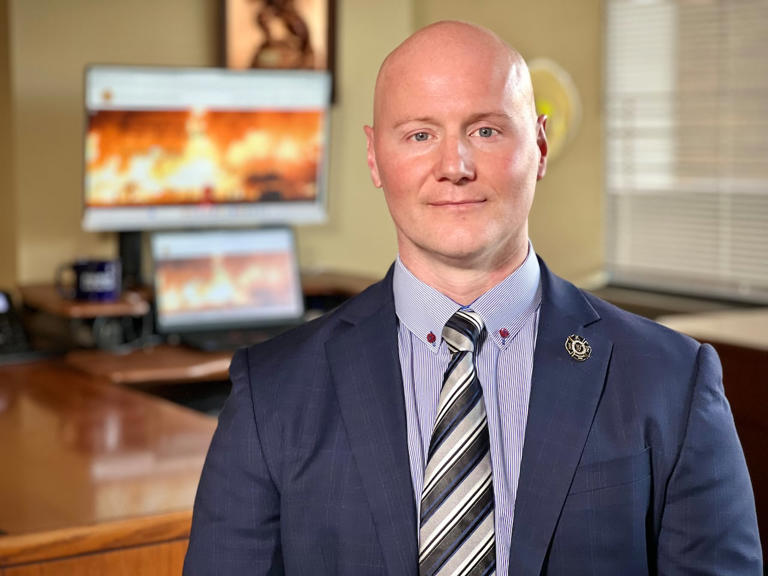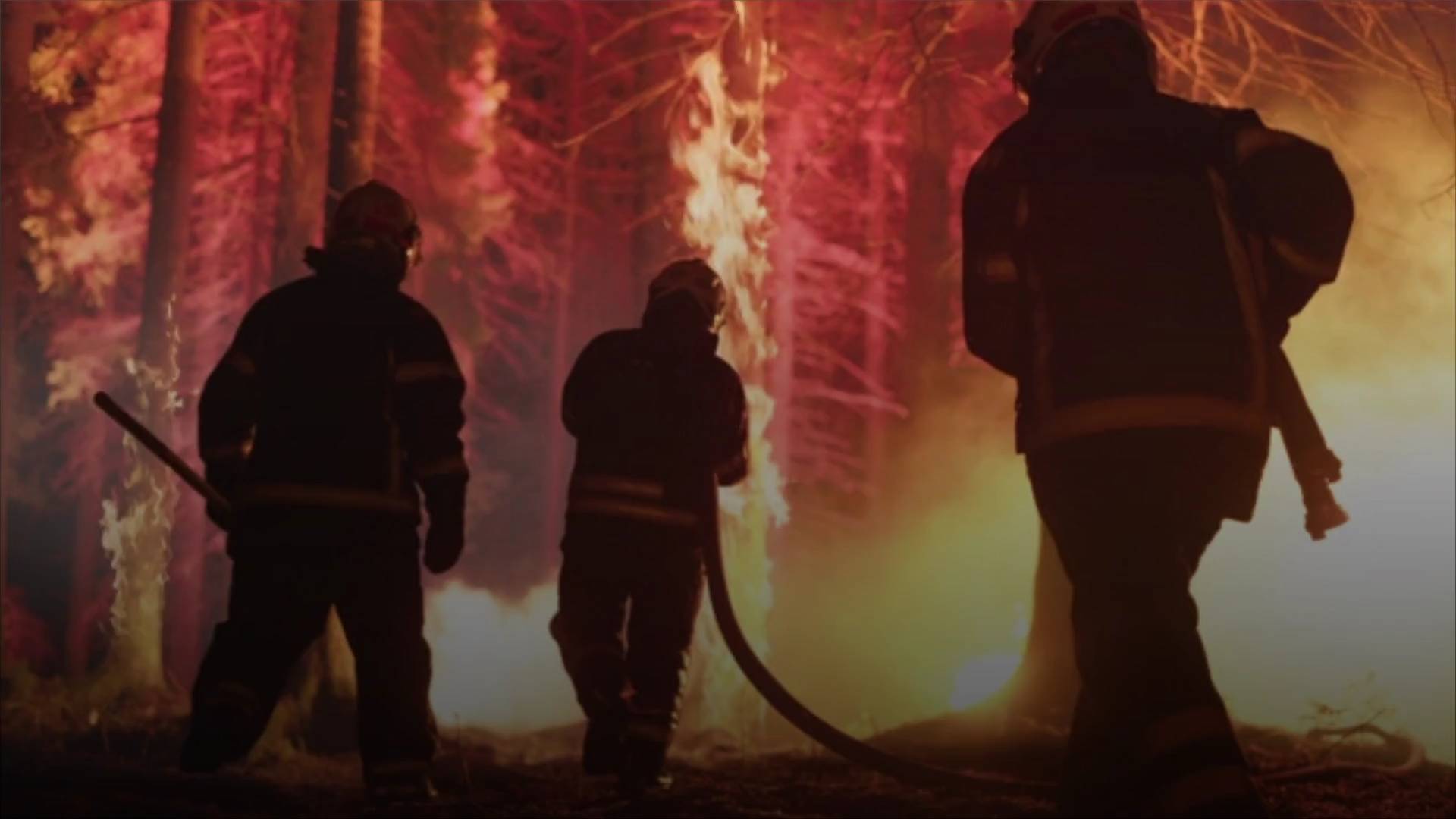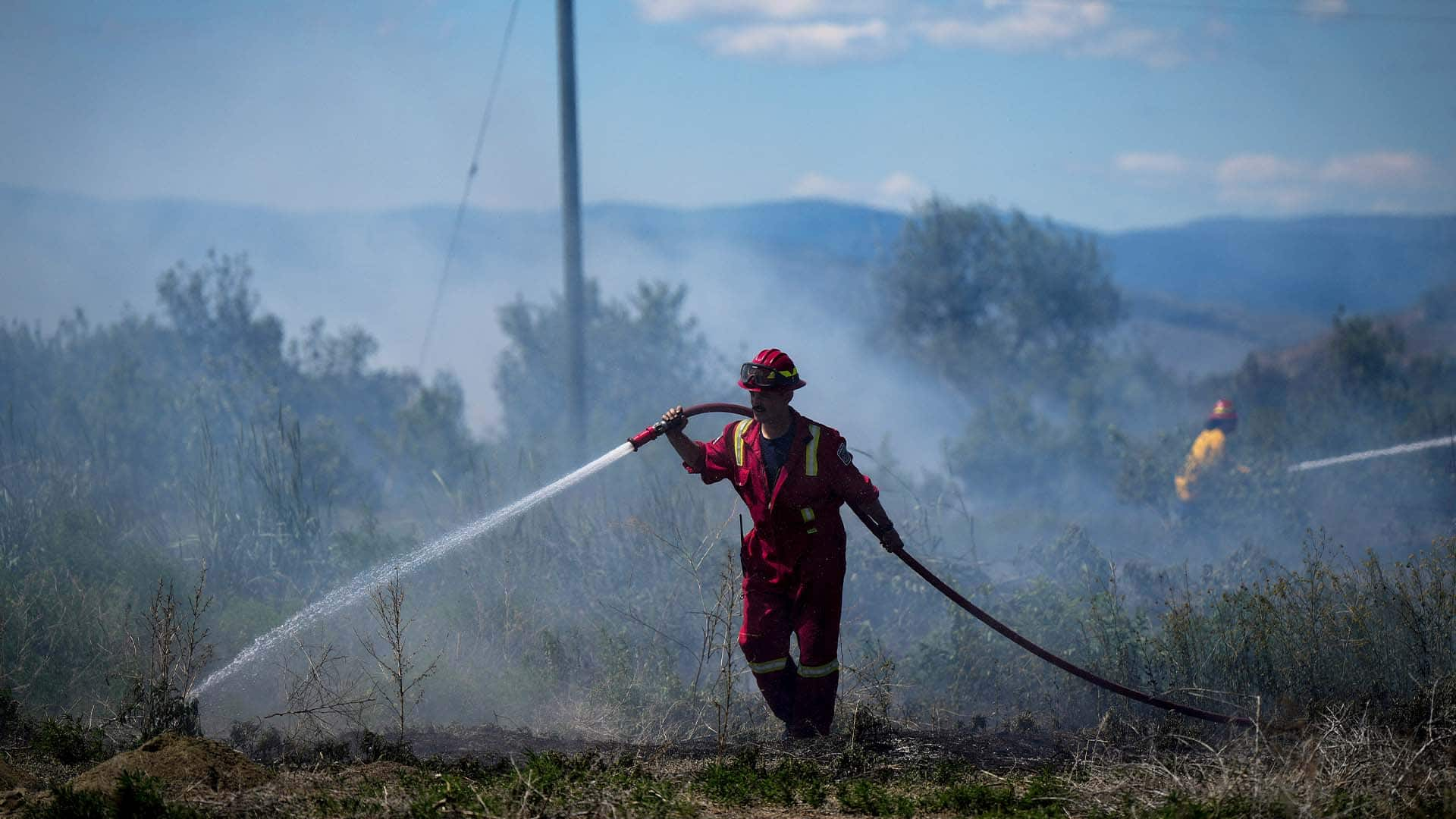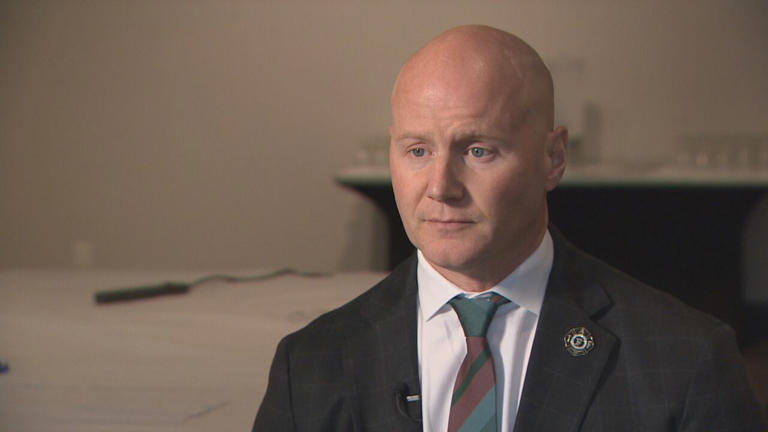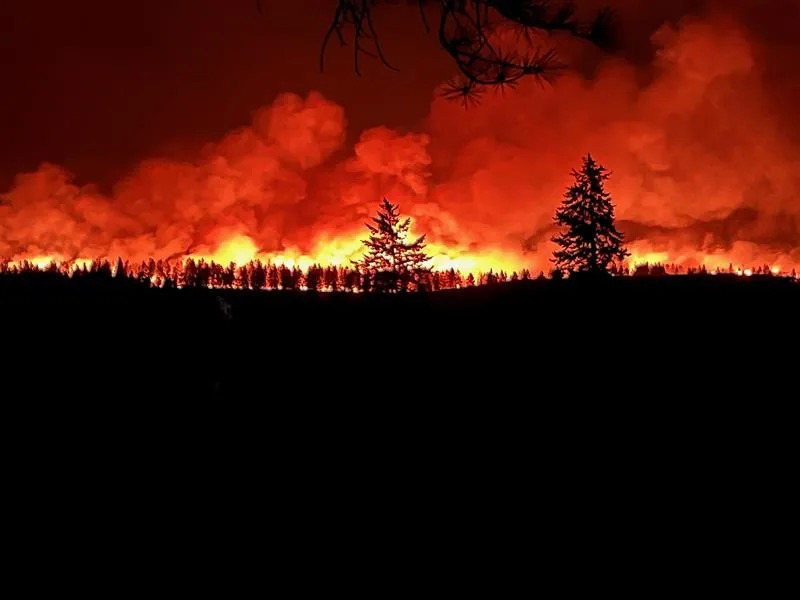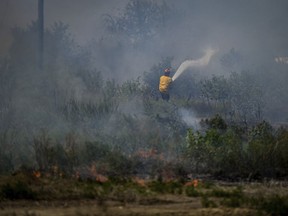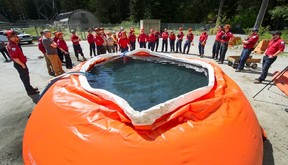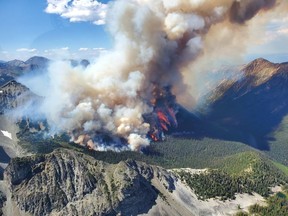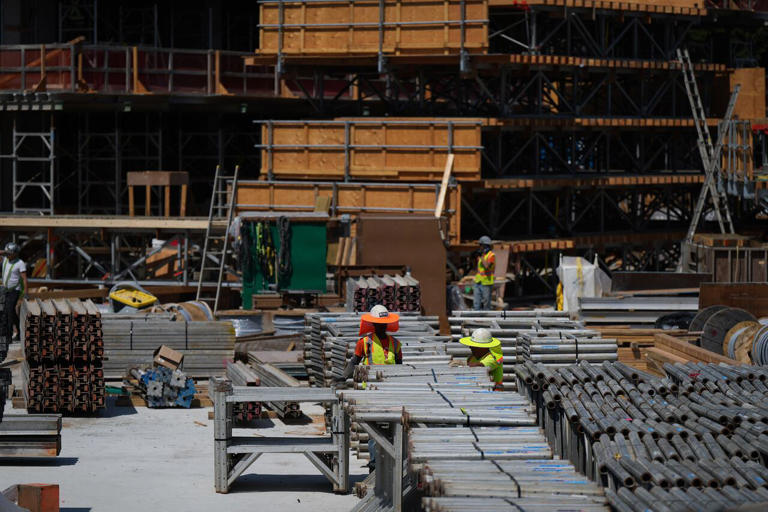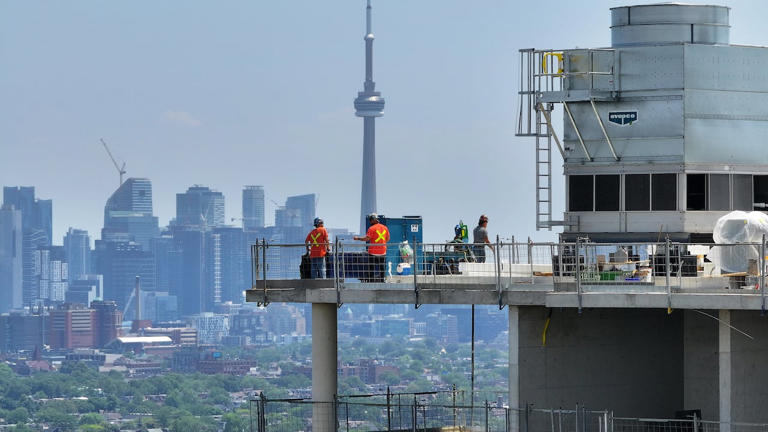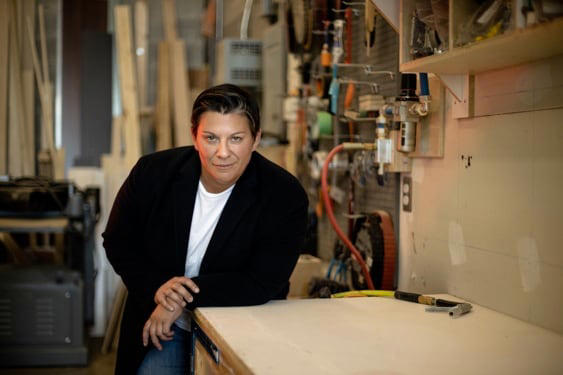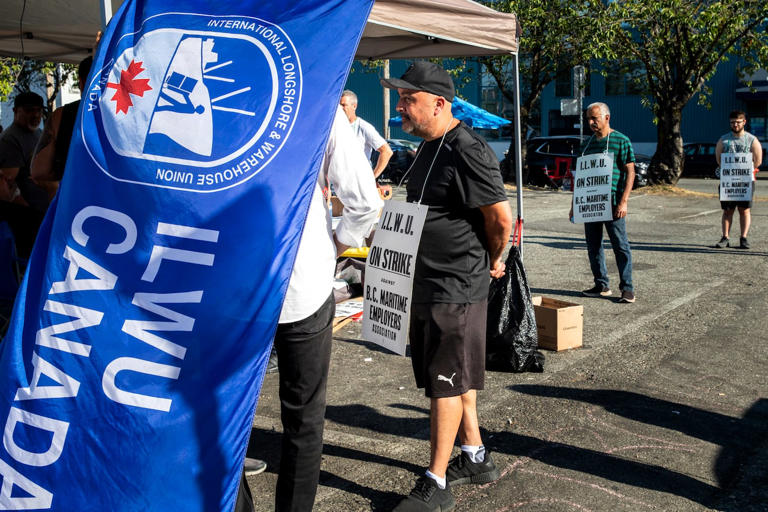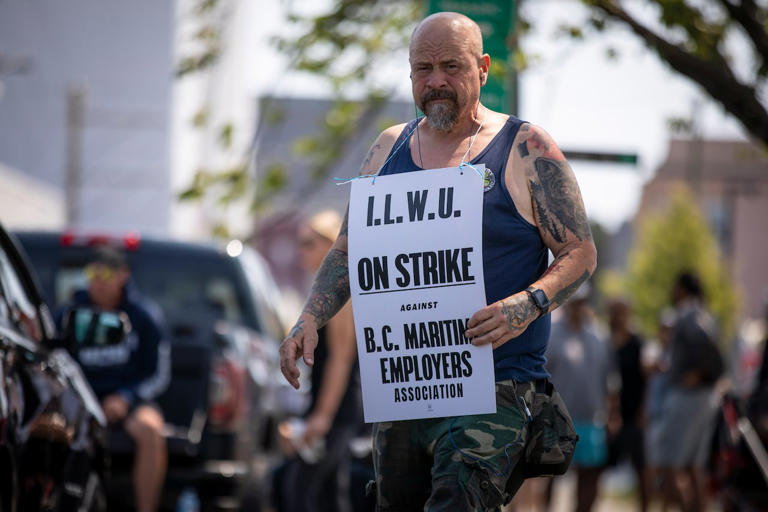Story by Vanessa Balintec • CBC - Tuesday, July 19,2023

Toronto resident Sylvana Orellana, 23, says she's struggling to pay rent, provide for herself and her son and cover daily expenses while earning minimum wage, even with support from friends and family. A report released Tuesday by an Ottawa think-tank found that while minimum wages have increased since 2018, they aren't rising as fast as rental rates.
© Darek Zdzienicki/CBC
Toronto resident Sylvana Orellana, who earns minimum wage, says paying for her and her two-year-old son's expenses often means sacrificing some bills in order to pay others.
That's because her rent — just over $1,700 per month — takes up a significant amount of her income, and she says she routinely relies on family and friends to help.
"It's sad to say, but at this point I don't even look at the numbers or how much they're paying me because … it's not going to cover my bills," said Orellana, 23. "I almost ended up in the hospital because of all of this stress."
A new report released Tuesday by Ottawa think-tank Canadian Centre for Policy Alternatives suggests Orellana isn't alone.
Economists David Macdonald and Ricardo Tranjan, the report's authors, found that while minimum wages rose compared to the 2018 data in the centre's last report, they aren't rising as fast as rental rates.
Macdonald says this means many workers are spending too much on rent, while Tranjan says the high cost of rent can ultimately mean that people making minimum wage are at risk of becoming homeless.
"Minimum wages are supposed to improve the conditions of folks that are or near the poverty line," said Macdonald. "But in fact those improvements in minimum wage have largely gone to paying landlords higher rent."
"I'm concerned about minimum wage workers and the kinds of very risky situations they must be putting themselves through," said Tranjan.
Their analysis, which covered 776 neighbourhoods in more than three dozen of the country's largest cities, calculated how much people have to make in a 40-hour work week in order to pay no more than 30 per cent of their income on housing, something they call the "rental wage."
Paying any more than that makes housing "unaffordable" according to the Canada Mortgage and Housing Corporation.
The researchers attributed the gap between minimum wage and what's needed to afford rentals to three main factors: wage suppression policies, such as using temporary foreign workers as a way to fill vacancies instead of raising wages to attract domestic workers; a low supply of rent-controlled housing; and poor regulation of the housing market that prioritizes "profit-making over housing security."
Macdonald says things are rapidly getting worse due to rising interest rates and the high cost of construction, while Tranjan pointed to provincial legislation exacerbating market conditions, including Ontario's move to remove rent control for new units and Quebec's attempt to end lease transfers.
Rent outstripping minimum wages across Canada
The co-authors say a lack of affordable housing isn't just a problem in huge urban centres. Using provincial and federal data from 2022, they found the rental wage for a one-bedroom unit is higher than the minimum wage in most major cities across the country.
Related video: Rents dwarf minimum wage in every Canadian province (Global News)
Toronto resident Sylvana Orellana, who earns minimum wage, says paying for her and her two-year-old son's expenses often means sacrificing some bills in order to pay others.
That's because her rent — just over $1,700 per month — takes up a significant amount of her income, and she says she routinely relies on family and friends to help.
"It's sad to say, but at this point I don't even look at the numbers or how much they're paying me because … it's not going to cover my bills," said Orellana, 23. "I almost ended up in the hospital because of all of this stress."
A new report released Tuesday by Ottawa think-tank Canadian Centre for Policy Alternatives suggests Orellana isn't alone.
Economists David Macdonald and Ricardo Tranjan, the report's authors, found that while minimum wages rose compared to the 2018 data in the centre's last report, they aren't rising as fast as rental rates.
Macdonald says this means many workers are spending too much on rent, while Tranjan says the high cost of rent can ultimately mean that people making minimum wage are at risk of becoming homeless.
"Minimum wages are supposed to improve the conditions of folks that are or near the poverty line," said Macdonald. "But in fact those improvements in minimum wage have largely gone to paying landlords higher rent."
"I'm concerned about minimum wage workers and the kinds of very risky situations they must be putting themselves through," said Tranjan.
Their analysis, which covered 776 neighbourhoods in more than three dozen of the country's largest cities, calculated how much people have to make in a 40-hour work week in order to pay no more than 30 per cent of their income on housing, something they call the "rental wage."
Paying any more than that makes housing "unaffordable" according to the Canada Mortgage and Housing Corporation.
The researchers attributed the gap between minimum wage and what's needed to afford rentals to three main factors: wage suppression policies, such as using temporary foreign workers as a way to fill vacancies instead of raising wages to attract domestic workers; a low supply of rent-controlled housing; and poor regulation of the housing market that prioritizes "profit-making over housing security."
Macdonald says things are rapidly getting worse due to rising interest rates and the high cost of construction, while Tranjan pointed to provincial legislation exacerbating market conditions, including Ontario's move to remove rent control for new units and Quebec's attempt to end lease transfers.
Rent outstripping minimum wages across Canada
The co-authors say a lack of affordable housing isn't just a problem in huge urban centres. Using provincial and federal data from 2022, they found the rental wage for a one-bedroom unit is higher than the minimum wage in most major cities across the country.
Related video: Rents dwarf minimum wage in every Canadian province (Global News)
Using the rental calculation, the report also found that minimum wage workers could only afford one-bedroom units in three cities, all in Quebec. And even there, where rents are comparatively more affordable than in other parts of the country, researchers say the trend is "worrisome" as workers still need to earn more than minimum wage to be able to rent an affordable unit.
Meanwhile, in Toronto and Vancouver, the report suggests that even two full-time minimum wage workers can't afford a one-bedroom unit without spending more than 30 per cent of their income, let alone a two-bedroom unit. In B.C., the rental wage for a two-bedroom unit is more than twice as much as the minimum wage, with Ontario's just under double the minimum wage.
The report did not look extensively at those on social assistance and disability supports, but those subsidies were found to be even less than provincial minimum wages. Tranjan says if they had taken a closer look, the results would have been even more bleak.
"We don't have enough social housing in the country for all the folks who are presently receiving social assistance, and a large and increasing share of social assistance recipients rely on the private rental market for housing," he said.
"They're competing with minimum wage workers and with everyone else."
Rent unaffordable in most Canadian cities for minimum-wage workers, new study says (CBC)
Raising wages
Historically, minimum wages were set by governments to protect non-unionized workers, reduce the number of low-paying jobs and alleviate poverty, among a host of other potential benefits, according to the federal government.
But today, an important part of what determines wages is the market, said Roslyn Kunin, the president of an economic consulting firm in Vancouver, B.C. She says wages are primarily determined by the productivity and skills of workers, while rents are based on supply and demand of housing units.
"There has to be someone willing to work at that wage and there has to be someone who can afford to pay that wage for that kind of work," said Kunin.
Tranjan and Macdonald, cross-referencing federal and provincial data from 2021, estimate about 828,000 people across the country were earning a minimum wage salary or less. Meanwhile, about 1.1 million Canadians belonged to households where two or more people earned the equivalent of two full-time minimum wage jobs or less.
According to Kunin, raising wages to match rental rates would not only cause the cost of common goods to increase, but it would likely lead to the disappearance of many jobs and businesses altogether.
"All of us would suffer from the loss of available goods and services."
Minimum wage workers losing ground with rent affordability (CITY TV)
Short and long-term solutions
"For individuals, the best thing to do is to get as much education, experience, training as possible so you can work for a wage that's higher," said Kunin, adding that obtaining additional education is "easier than it has been" due to the rise of online learning.
But Brenda Spotton Visano, a public policy and economics professor at York University in Toronto, says these workers are often stuck in a "catch-22" situation, since many don't have the time or money to upgrade their skills that might be required for higher-paying jobs.
She says it may be worthwhile to explore more creative ways of setting the minimum wage, such as tying how much the lowest-paid workers get paid to how much profit a company makes or how much its CEO gets paid, or indexing the minimum wage to the cost of living calculated for a given community.
"But in the short-term, increasing the minimum wage is going to have to be our short-term solution to address the people who are now suffering," said Visano.
The researchers say governments should focus on financing, building and acquiring purpose-built and non-market housing, regulating the rental market with rent controls and banishing the use of above-guideline rent increases.
"It's not to say we shouldn't be pushing for higher minimum wages, but the real problem here is a lack of rental, affordable housing," said Macdonald.
"This is not a situation that's going to improve. It's actually going to get much worse unless there's a big intervention."
Toronto rent prices require Ontario minimum wage to jump to $40 an hour: Report
David Macdonald, senior economist at the Canadian Centre for Policy Alternatives, joins BNN Bloomberg to discuss the required minimum wage to live in Ontario. MacDonald says only 10 out of 37 cities in Canada, are where a one-bedroom is affordable for a minimum wage worker.
ONE YEAR AGO
Growing affordability concerns for Canadian renters
Apr 24, 2022
Growing affordability concerns for Canadian renters
Apr 24, 2022
From groceries to gas, Canadians are paying more for just about everything these days — and you can add rent to the list of expenses that just keep climbing.
In Quebec, tenant advocates warn that the rising cost of rent is making it harder for people to find an affordable place to live. During the 10th annual Tenants Day in Montreal Sunday afternoon, dozens of people gathered outside Verdun metro station to demand the provincial government put an end to the current housing crisis. Dan Spector reports.
In Quebec, tenant advocates warn that the rising cost of rent is making it harder for people to find an affordable place to live. During the 10th annual Tenants Day in Montreal Sunday afternoon, dozens of people gathered outside Verdun metro station to demand the provincial government put an end to the current housing crisis. Dan Spector reports.
